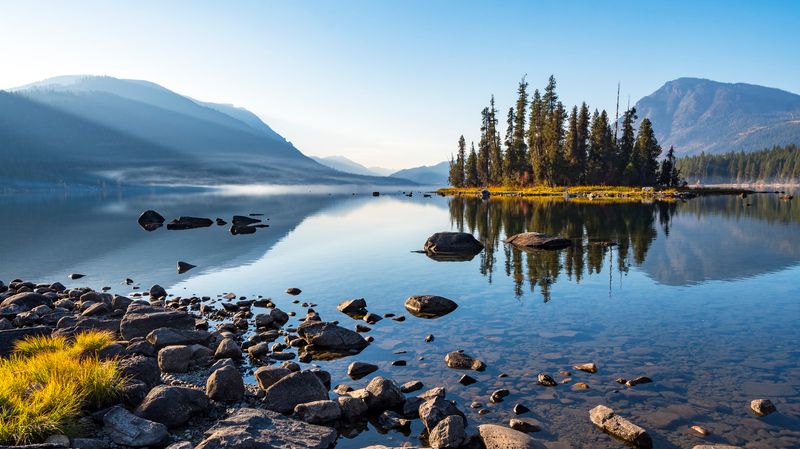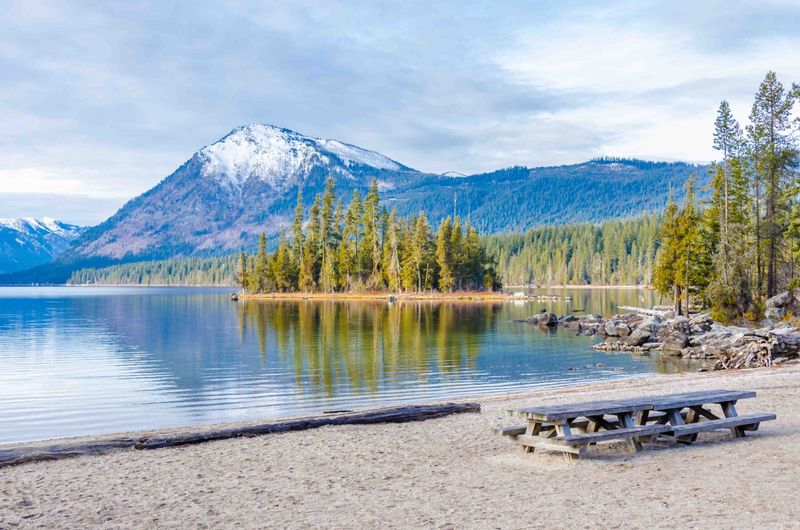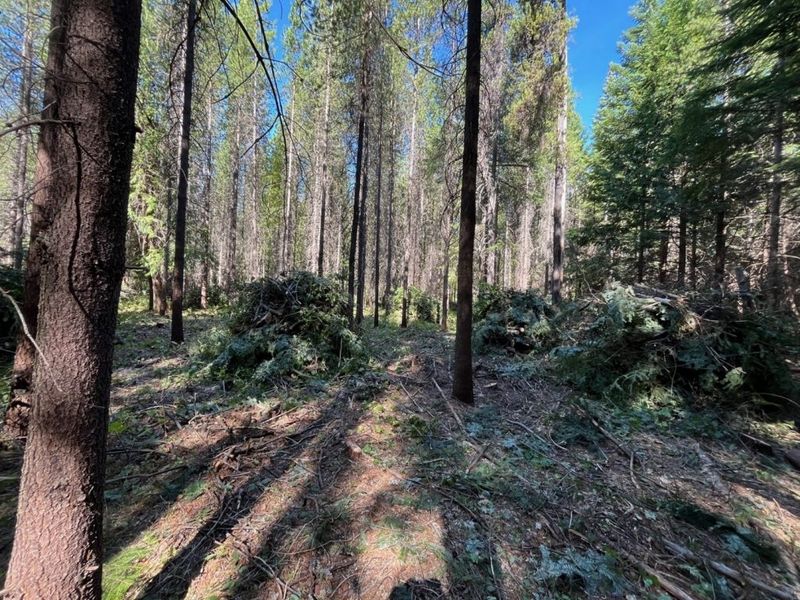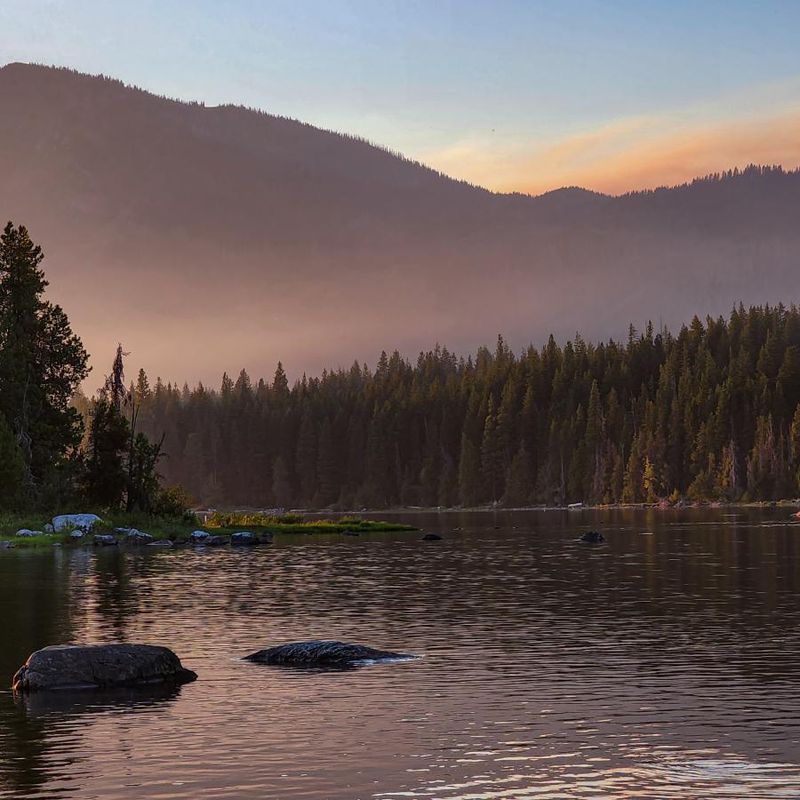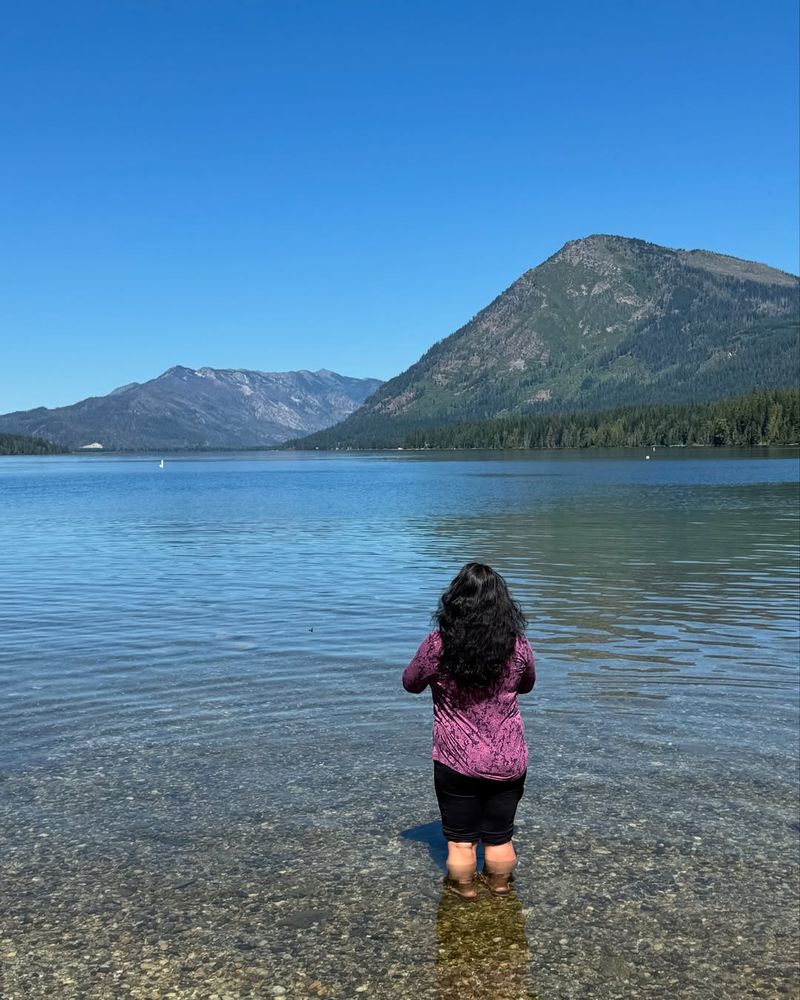Looking for a place where dramatic mountain scenery meets crystal-clear waters and endless adventure? Lake Wenatchee delivers with glacier-fed brilliance, forest-framed shores, and trails that launch straight into wilderness. Whether you’re pitching a tent, paddling a kayak, or strapping on snowshoes, this alpine lake flips seamlessly between summer and winter thrills. Read on for twelve essential facts that will help you plan an unforgettable escape to Washington’s high-country gem.
1. Glacier- and Snowmelt-Fed Origin
Lake Wenatchee gleams with the cold clarity of a high-mountain waterbody fed by glaciers and seasonal snowmelt from the eastern slopes of Washington’s Cascade Range. This origin creates strikingly clear water, a dynamic annual cycle, and refreshing summer temperatures perfect for paddling. Snowmelt pulses shape water levels and nourish downstream habitats. The glacial legacy also influences sediment and color, lending that cobalt-alpine hue. Visitors can literally see the story of ice, snow, and granite written into the shoreline. For paddlers and photographers, the interplay of meltwater and mountain light is irresistible.
2. Size and Depth
Covering about 2,480 acres, roughly four square miles, Lake Wenatchee offers ample room for exploration by kayak, paddleboard, or sail. Its maximum depth extends to approximately 244 feet, giving the lake a striking clarity and cool temperature profile well into summer. Anglers benefit from the varied depths that create habitat niches. Boaters find expansive reaches but also sheltered coves. The lake’s size supports a mix of recreation without feeling crowded, especially on weekdays or early mornings. Depth contours also influence wind patterns and wave action, so paddlers should monitor conditions before venturing far from shore.
3. Location and Elevation
Nestled in Chelan County on the east side of Washington’s Cascade Range, Lake Wenatchee sits at about 1,873 feet above sea level. This transitional elevation often means sunnier, drier weather than the west slopes, yet with alpine views all around. Proximity to Leavenworth provides easy resupply and dining, while the surrounding Wenatchee National Forest keeps the setting wild. The elevation supports four distinct seasons, from wildflower springs to golden larch autumns. Travelers coming via US Highway 2 appreciate how the landscape opens into sunny valleys. The lake becomes a perfect basecamp for Cascade adventures.
4. Inflow and Outflow Rivers
Lake Wenatchee gathers its cold, clean inflows from the White River and the Little Wenatchee River, both funneling snowmelt from high Cascadian valleys. At the outlet, the waters coalesce to form the Wenatchee River, making the lake a crucial headwater source. This connectivity supports fish migrations and enriches downstream ecosystems. Paddlers near the river mouths can feel subtle current differentials. The inflow deltas host interesting birdlife at dawn and dusk. Understanding the lake’s hydrology helps visitors appreciate its clarity, fluctuating levels, and the broader watershed that ties alpine snows to orchard country far below.
5. Scenic Setting and Wilderness Context
Surrounded by deep evergreen forests and knife-edged peaks, Lake Wenatchee blends easy access with a true wilderness feel. The Wenatchee National Forest frames the shoreline and ridgelines, while the Bavarian-themed town of Leavenworth sits within easy driving distance for supplies and après-hike treats. Trailheads branch toward alpine basins and ridge walks with big-sky vistas. Wildlife sightings add to the sense of remoteness. Early mornings bring mirror-flat reflections, perfect for photography. As clouds rake the summits, light shifts dramatically over the water. It’s an ideal setting for visitors seeking immersion in mountain scenery without complicated logistics.
6. Lake Wenatchee State Park on the Shore
Lake Wenatchee State Park spans roughly 492 acres with over two miles of combined shoreline along the lake and Wenatchee River. The park’s day-use areas, beaches, and boat launches make it the most popular gateway to the water. Families love the picnic spots under towering pines. Trails connect to viewpoints and river walks. The park’s layout balances recreation and habitat protection, with designated swim zones and seasonal closures. Even on busy days, you can find quiet corners by exploring early or venturing to less-used loops. It’s a hub for both casual visitors and committed adventurers.
7. Four Seasons of Adventure
Lake Wenatchee shifts with the seasons, offering swimming, boating, kayaking, and paddleboarding during long summer days. As temperatures drop, the park transitions to a Sno-Park, welcoming cross-country skiers, snowshoers, and sledders on groomed trails. Shoulder seasons bring quiet beaches and moody light, ideal for photographers and birders. Year-round, visitors can tailor trips to their comfort levels, from casual picnics to multi-hour treks. Rental options and lessons appear seasonally. The broad mix of activities ensures that families and hardcore explorers alike find their niche, making the lake a dependable destination month after month.
8. Camping and Access Essentials
Two primary campgrounds, North and South, anchor overnight stays within Lake Wenatchee State Park. Sites range from standard to partial hookup, with restrooms, water access, and ADA options. Reservations are strongly recommended during peak months. When the main loops close in winter, limited camping continues in designated areas for hardy visitors. Access is straightforward via State Route 207, and day-use parking fills quickly on weekends. Arrive early for lakeside spots or quieter loops. The campgrounds’ proximity to trailheads and boat launches makes sunrise paddles and sunset hikes easy to plan without extra driving.
9. Wildlife Encounters and Safety
Lake Wenatchee’s forests and riparian corridors host bears, deer, birds of prey, and smaller mammals, creating exciting viewing opportunities with responsibility. Visitors must use proper food storage to reduce bear encounters and protect wildlife behavior. Keep camps clean, pack out trash, and follow posted guidance. Dawn and dusk are prime wildlife hours, so carry a light and keep safe distances for photos. Pets should stay leashed to avoid conflicts. Seasonal closures may protect sensitive habitats. With awareness and respect, wildlife sightings elevate any trip while ensuring animals remain healthy and wild for future visitors.
10. Indigenous Roots and Glacial History
The Lake Wenatchee landscape reflects intertwined human and geologic histories. Glaciers deepened the upper Wenatchee River valley and left a moraine that dammed the lake, shaping today’s shorelines. Long before modern recreation, Sahaptian and Interior Salish peoples lived, traveled, and fished throughout the region. The lake and river corridors remain culturally significant. Visitors can seek interpretive materials to learn respectfully about these heritages. Recognizing Indigenous stewardship adds depth to a hike or paddle. Geology underpins the scenery you see, while living cultures enrich the meaning of place. Tread thoughtfully and leave no trace.
11. Fishing, Salmon, and Aquatic Life
Anglers visit Lake Wenatchee for trout and kokanee, with seasonal opportunities influenced by water temperature and clarity. The lake connects to a broader salmon system, including notable sockeye returns that link ecological cycles with cultural traditions. Regulations protect sensitive runs, so always check current rules before casting. Early mornings and evenings often produce better bites, especially along drop-offs. Paddlers and anglers share the water respectfully, yielding quiet, productive zones. The presence of migrating salmon underscores the lake’s role in watershed health. Understanding species timing helps plan successful, sustainable outings.
12. Getting There and Nearby Landmarks
Access Lake Wenatchee by turning onto State Route 207 from US Highway 2, then follow signs to the state park and boat launches. The rugged profile of Dirtyface Peak rises to the northwest, offering a challenging hike with commanding lake views. Aviation enthusiasts note the nearby Lake Wenatchee State Airport, a small grass airstrip that adds character to the setting. Leavenworth’s shops and eateries lie a short drive away for post-adventure treats. This combination of easy access, iconic peaks, and unique amenities makes trip logistics simple while keeping the experience distinctly alpine.

